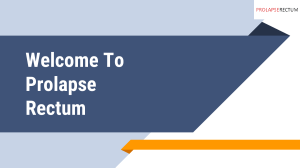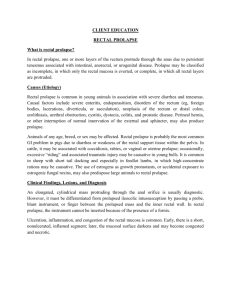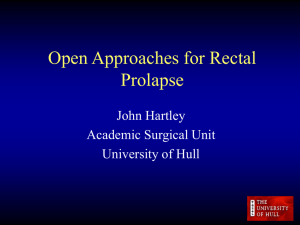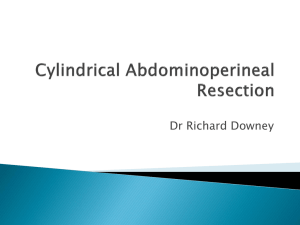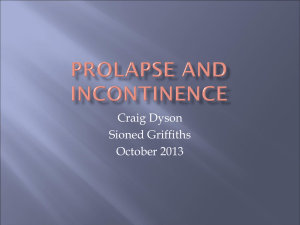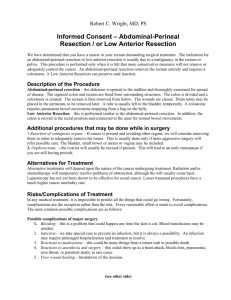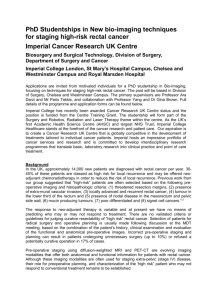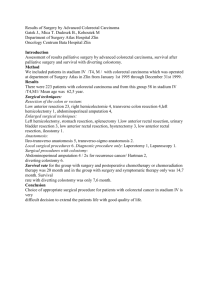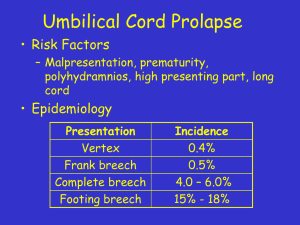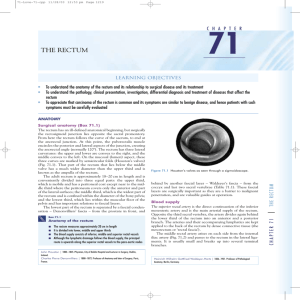RECTAL PROLAPSE - PERINEAL OR ABDOMINAL APPROACH
advertisement
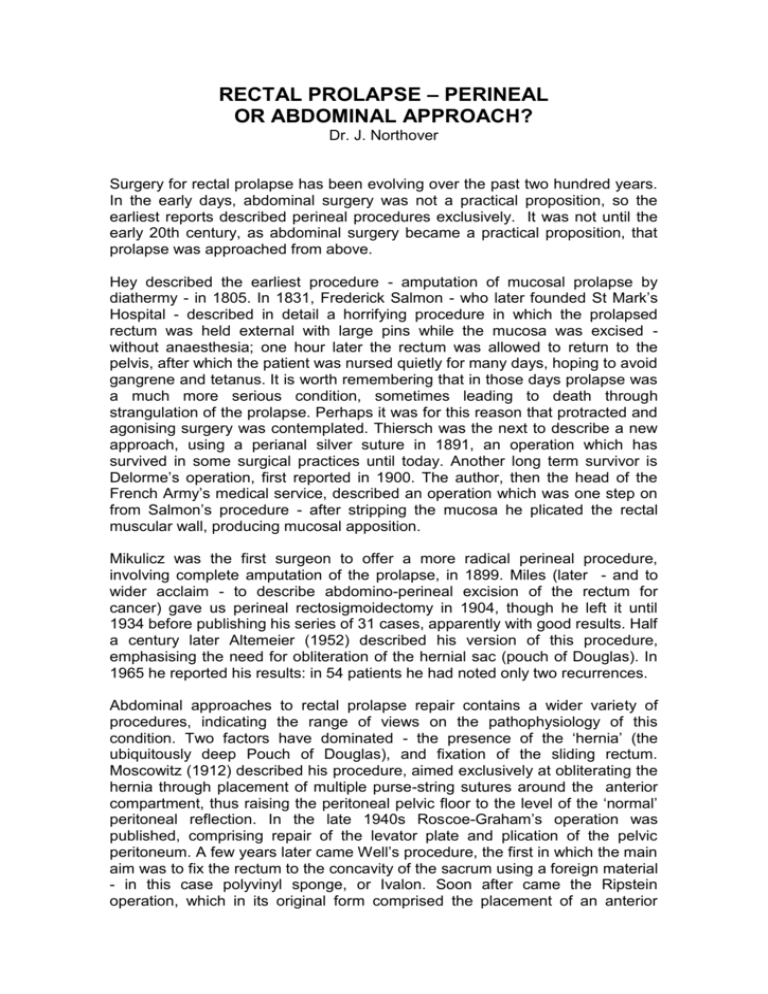
RECTAL PROLAPSE – PERINEAL OR ABDOMINAL APPROACH? Dr. J. Northover Surgery for rectal prolapse has been evolving over the past two hundred years. In the early days, abdominal surgery was not a practical proposition, so the earliest reports described perineal procedures exclusively. It was not until the early 20th century, as abdominal surgery became a practical proposition, that prolapse was approached from above. Hey described the earliest procedure - amputation of mucosal prolapse by diathermy - in 1805. In 1831, Frederick Salmon - who later founded St Mark’s Hospital - described in detail a horrifying procedure in which the prolapsed rectum was held external with large pins while the mucosa was excised without anaesthesia; one hour later the rectum was allowed to return to the pelvis, after which the patient was nursed quietly for many days, hoping to avoid gangrene and tetanus. It is worth remembering that in those days prolapse was a much more serious condition, sometimes leading to death through strangulation of the prolapse. Perhaps it was for this reason that protracted and agonising surgery was contemplated. Thiersch was the next to describe a new approach, using a perianal silver suture in 1891, an operation which has survived in some surgical practices until today. Another long term survivor is Delorme’s operation, first reported in 1900. The author, then the head of the French Army’s medical service, described an operation which was one step on from Salmon’s procedure - after stripping the mucosa he plicated the rectal muscular wall, producing mucosal apposition. Mikulicz was the first surgeon to offer a more radical perineal procedure, involving complete amputation of the prolapse, in 1899. Miles (later - and to wider acclaim - to describe abdomino-perineal excision of the rectum for cancer) gave us perineal rectosigmoidectomy in 1904, though he left it until 1934 before publishing his series of 31 cases, apparently with good results. Half a century later Altemeier (1952) described his version of this procedure, emphasising the need for obliteration of the hernial sac (pouch of Douglas). In 1965 he reported his results: in 54 patients he had noted only two recurrences. Abdominal approaches to rectal prolapse repair contains a wider variety of procedures, indicating the range of views on the pathophysiology of this condition. Two factors have dominated - the presence of the ‘hernia’ (the ubiquitously deep Pouch of Douglas), and fixation of the sliding rectum. Moscowitz (1912) described his procedure, aimed exclusively at obliterating the hernia through placement of multiple purse-string sutures around the anterior compartment, thus raising the peritoneal pelvic floor to the level of the ‘normal’ peritoneal reflection. In the late 1940s Roscoe-Graham’s operation was published, comprising repair of the levator plate and plication of the pelvic peritoneum. A few years later came Well’s procedure, the first in which the main aim was to fix the rectum to the concavity of the sacrum using a foreign material - in this case polyvinyl sponge, or Ivalon. Soon after came the Ripstein operation, which in its original form comprised the placement of an anterior mesh sling to support the rectum in its normal position. A simpler procedure, in which sutures alone rather than a sheet of mesh was used to support the rectum, was described by Pemberton and later by Carter. The most radical group of operations were those involving a trans-abdominal segmental bowel resection. Von Eiselberg described a sigmoid resection for prolapse as long ago as 1902. Muir used anterior rectal resection - as for rectal cancer - in 1955. In the mid 60s, Frykman and Goldberg’s combination of suture-only rectopexy and sigmoid resection was described. With such a wide choice of procedures it is perhaps no surprise that there is a wide range of choices made in practice. Much of the variation seems to be on national lines. In the UK, Well’s operation has been predominant for several decades, with Delorme’s operation gaining in popularity more recently. In the US, however, Ripstein’s and the Frykman-Goldberg operations have held sway, while more recently the Altemeier procedure has become more popular. How do we choose, and are there any commonly acceptable advantages for the abdominal or perineal approaches, and for the variations on those two main themes? The following statements are probably accurate: Recurrences rates are higher for perineal procedures – 10 - 20% compared to 2 - 5%. Abdominal operations carry a higher operative risk for the frail patient. All else remains speculative; for instance, does bowel resection in the abdominal approach decrease the risk of post-operative constipation, or does it increase the likelihood of incontinence? Is there any advantage in full thickness, rather than mucosal, resection in the perineal approach? Does insertion of a mesh improve the outcome in abdominal rectopexy? Little has been learned about the relative merits of these various approaches through the use of randomised trials. There have been five, but only a total of 157 patients were recruited to all these added together. A large national trial to answer some of these questions is to be launched in the UK later this year.
